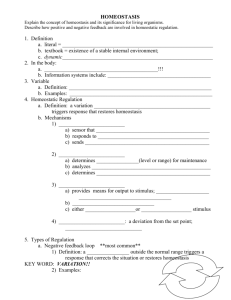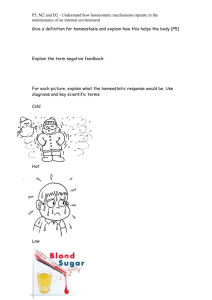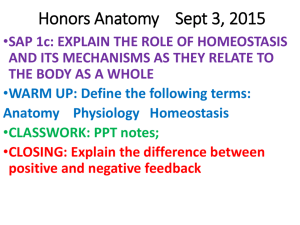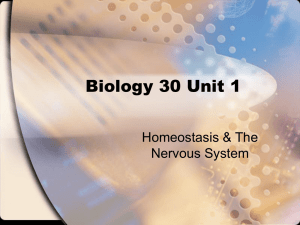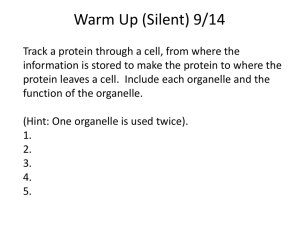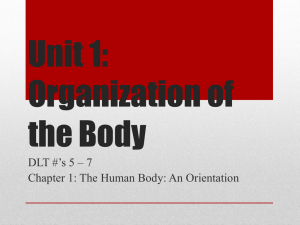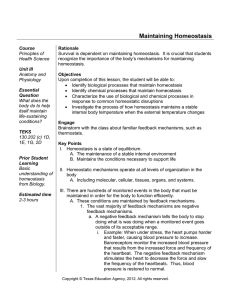Homeostasis-Objs-n-DVD
advertisement
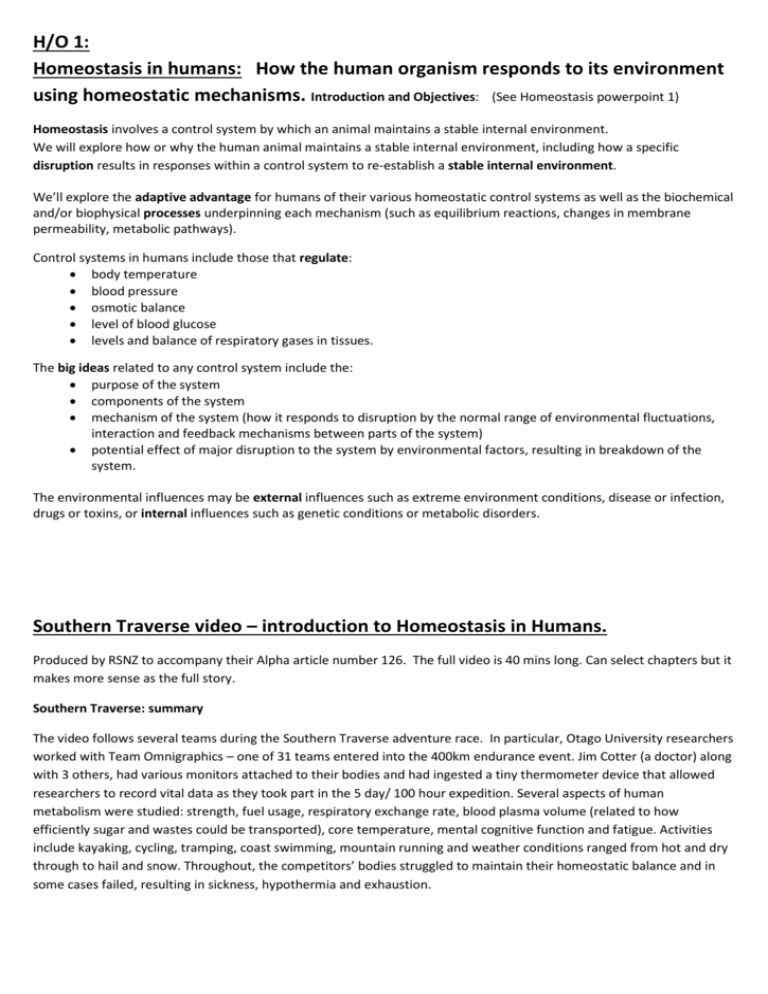
H/O 1: Homeostasis in humans: How the human organism responds to its environment using homeostatic mechanisms. Introduction and Objectives: (See Homeostasis powerpoint 1) Homeostasis involves a control system by which an animal maintains a stable internal environment. We will explore how or why the human animal maintains a stable internal environment, including how a specific disruption results in responses within a control system to re-establish a stable internal environment. We’ll explore the adaptive advantage for humans of their various homeostatic control systems as well as the biochemical and/or biophysical processes underpinning each mechanism (such as equilibrium reactions, changes in membrane permeability, metabolic pathways). Control systems in humans include those that regulate: body temperature blood pressure osmotic balance level of blood glucose levels and balance of respiratory gases in tissues. The big ideas related to any control system include the: purpose of the system components of the system mechanism of the system (how it responds to disruption by the normal range of environmental fluctuations, interaction and feedback mechanisms between parts of the system) potential effect of major disruption to the system by environmental factors, resulting in breakdown of the system. The environmental influences may be external influences such as extreme environment conditions, disease or infection, drugs or toxins, or internal influences such as genetic conditions or metabolic disorders. Southern Traverse video – introduction to Homeostasis in Humans. Produced by RSNZ to accompany their Alpha article number 126. The full video is 40 mins long. Can select chapters but it makes more sense as the full story. Southern Traverse: summary The video follows several teams during the Southern Traverse adventure race. In particular, Otago University researchers worked with Team Omnigraphics – one of 31 teams entered into the 400km endurance event. Jim Cotter (a doctor) along with 3 others, had various monitors attached to their bodies and had ingested a tiny thermometer device that allowed researchers to record vital data as they took part in the 5 day/ 100 hour expedition. Several aspects of human metabolism were studied: strength, fuel usage, respiratory exchange rate, blood plasma volume (related to how efficiently sugar and wastes could be transported), core temperature, mental cognitive function and fatigue. Activities include kayaking, cycling, tramping, coast swimming, mountain running and weather conditions ranged from hot and dry through to hail and snow. Throughout, the competitors’ bodies struggled to maintain their homeostatic balance and in some cases failed, resulting in sickness, hypothermia and exhaustion.

